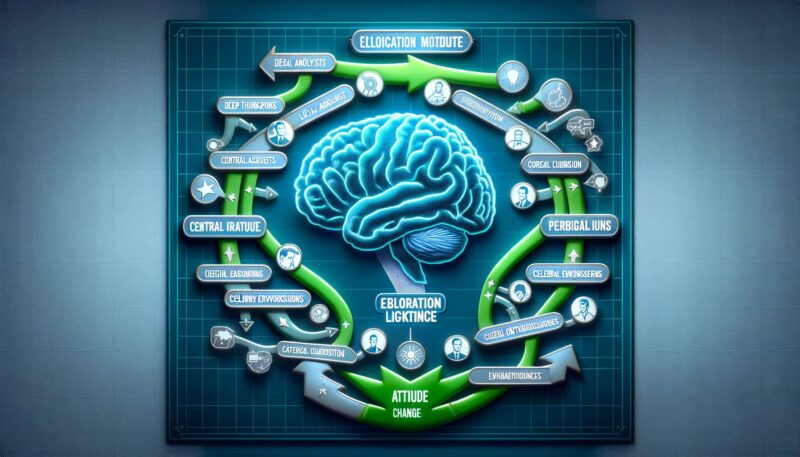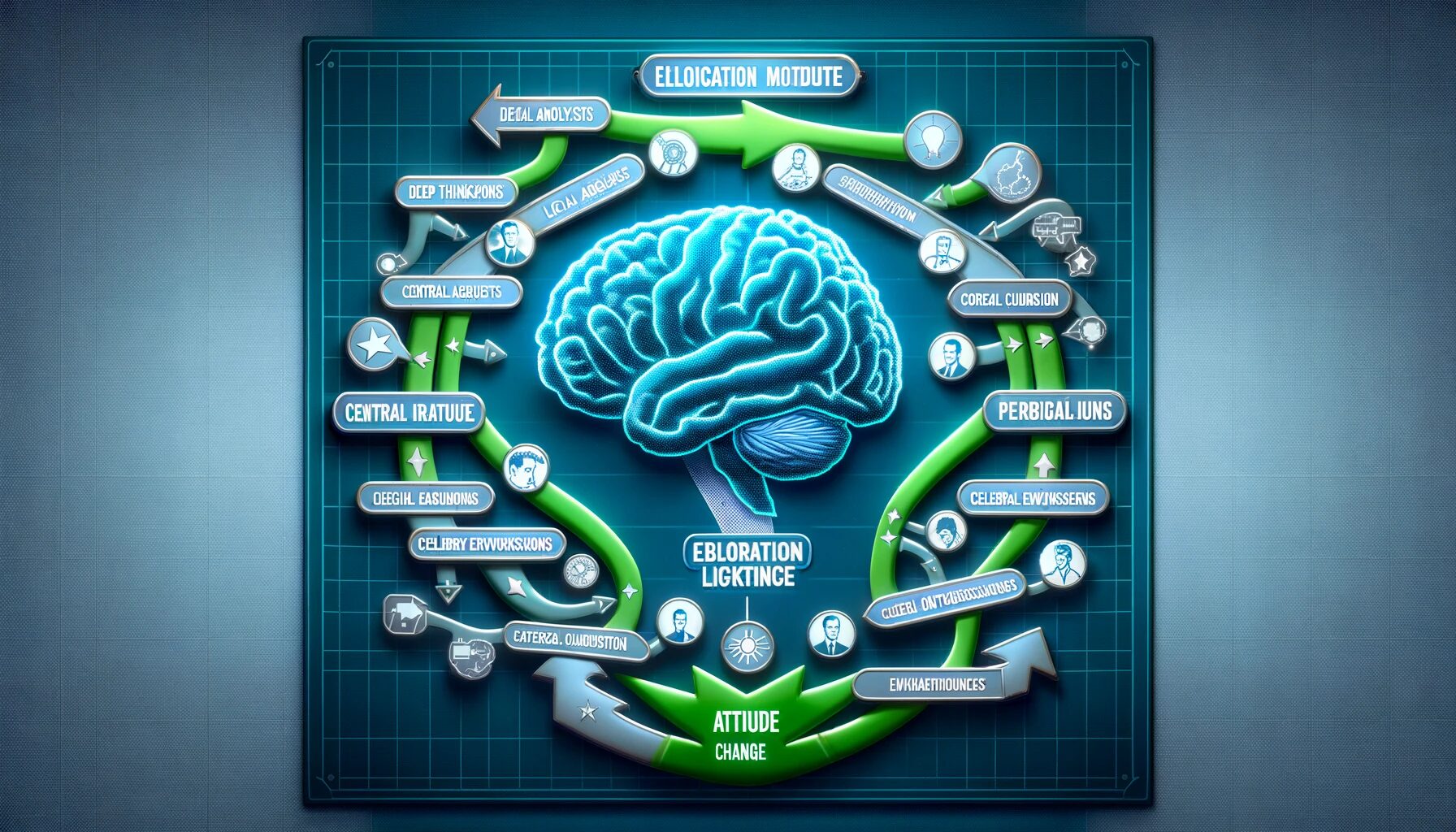Do you have questions or concerns like these?
- What is Elaboration likelihood model?
- What is a concrete example of Elaboration likelihood model?
If you’re grappling with such questions and uncertainties, this time I will clearly explain:
- Overview
- A concrete example based on my experience
Please refer to this article to deepen your understanding of Elaboration likelihood model.
What is Elaboration likelihood model?

Elaboration Likelihood Model (ELM) is a dual process model of attitude change developed by Richard E. Petty and John Cacioppo in 1980.
The model explains different ways of processing stimuli and their outcomes on attitude change, proposing two major routes to persuasion: the central route and the peripheral route.
Central and Peripheral Routes
Central Route
Involves high levels of thought.
Attitude changes result from careful consideration of the message’s true merits. Attitudes formed this way are more enduring, resistant to persuasion, and predictive of behavior.
Peripheral Route
Involves low levels of thought.
Attitude changes result from associations with positive or negative cues unrelated to the logical quality of the message, such as the credibility or attractiveness of the source.
Key Assumptions
- People are motivated to hold correct attitudes.
- The amount and nature of thought varies with individual and situational factors.
- Variables can affect attitude change by serving as arguments, peripheral cues, or influencing the direction of thought about a message.
Applications
Advertising and Marketing
Persuasion techniques vary based on consumer involvement, such as using celebrity endorsements or presenting strong arguments.
Healthcare
Acceptance of health messages depends on their personal relevance to the individual.
E-commerce
User interactivity and source authority influence purchase intentions and brand attitudes.
Conclusion
ELM provides a comprehensive framework for understanding how people process information and how their attitudes change.
The model is widely applied in various fields, including advertising, marketing, and healthcare.
What is a concrete example of Elaboration likelihood model?

Interaction with Advertisements
Since learning about the Elaboration Likelihood Model (ELM), I have become more aware of how I respond to advertisements and marketing messages.
For example, when I see an ad featuring Shohei Ohtani, I feel positively about it regardless of its content.
This is a classic example of the influence through the “peripheral route” of ELM.
The presence of a famous and trustworthy figure like Shohei Ohtani naturally boosts my trust in the advertised product or service.
Applying the Central Route
On the other hand, when working on my marketing studies or writing academic papers, I process information through the central route.
For instance, when reading new marketing theories or consumer behavior research findings, I scrutinize and logically evaluate the content.
Knowledge acquired this way remains long-term in memory and is effectively utilized in academic discussions and practical marketing strategies.
Daily Choices
In my daily life, ELM also influences my choices.
For example, when gathering health-related information, I prioritize the reliability of the sources and process the information through the central route.
This helps me adopt healthy lifestyle habits based on trustworthy information.
Conversely, I am also influenced by the peripheral route, such as recommendations from friends or popular product reviews.
Conclusion
Understanding the ELM has allowed me to consciously observe how I process information and how my attitudes change, applying this knowledge effectively in both daily life and academic activities.
By accurately assessing the reliability and value of information, I can make better decisions and improve various aspects of my life.
This article uses material from the Wikipedia article “Elaboration likelihood model” which is released under the Creative Commons Attribution-Share-Alike License 4.0. Additionally, the texts and images were generated using ChatGPT.


